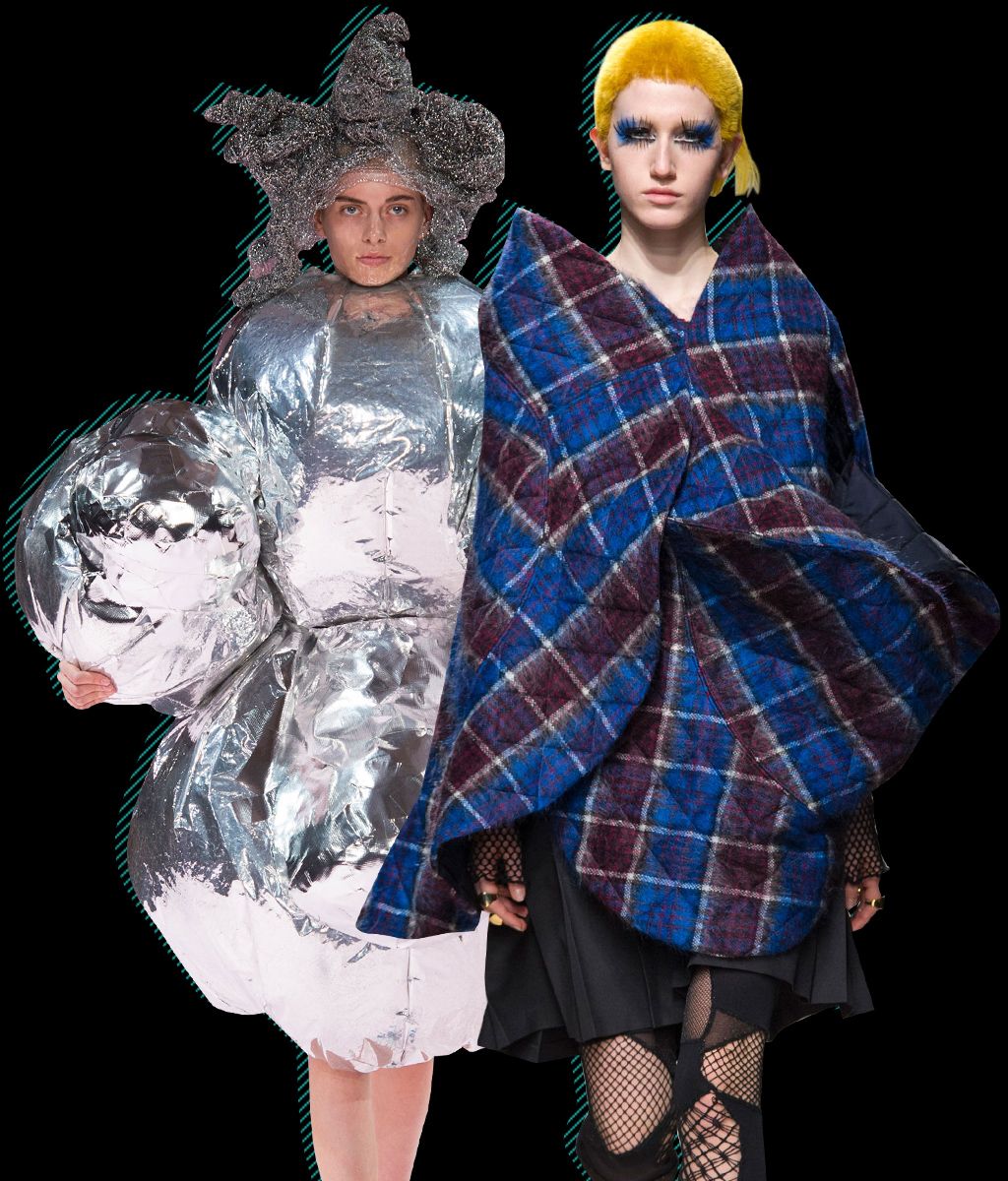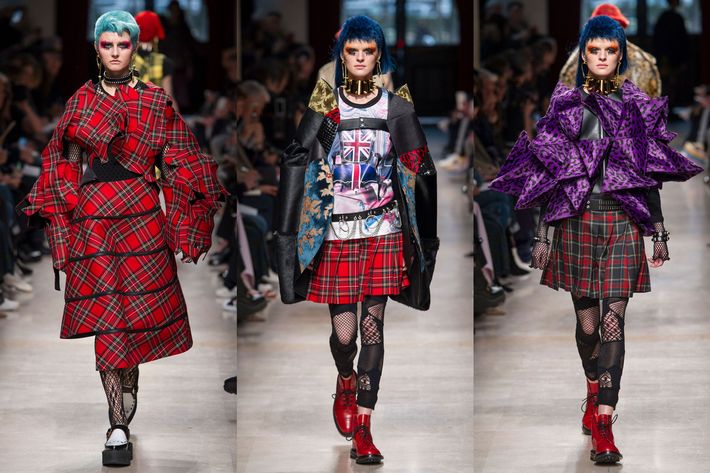This May, in a major acknowledgment of her art, Rei Kawakubo will participate in a retrospective at the Metropolitan Museum of Art. The thought of Kawakubo at the Met is staggering on a number of levels. She is a living designer, which is a rarity for such an exhibit. Her work over the past 40 years at Comme des Garçons has been controversial and often difficult to explain, but it will not be a surprise if attendance surpasses that of the McQueen exhibition, such is the spectacle of her clothes. When I try to picture the diminutive, frequently unsmiling Kawakubo on the red carpet at the Met gala — dressed, perhaps, as she was dressed yesterday at her fall show, in her standard black motorcycle jacket and black skirt — I see a woman distinctly out of her element, going perhaps against her will.
That’s because Kawakubo’s art has been defined by refusal — refusal to make normal clothes, refusal to play the fashion game, and refusal, above all, to explain herself. She will typically issue an enigmatic phrase — “red is the new black” is the best known. Yesterday, the key words were “the future of silhouette.” For the last several years, Kawakubo has all but given up designing actual clothes — with functioning armholes and so on — and instead focuses on sculptural pieces that vaguely resemble the outline of clothes. It’s almost an admission from the industry’s last living rebel that fashion design, at least for now, has hit a wall and can’t move forward.
However, the beauty of a Kawakubo collection, as I’ve discovered over the years, is that it’s hugely open to interpretation, and at the same time contains threads of thought that can be pulled through, from season to season. She has long been obsessed with silhouette — the foundation of fashion since, more or less, the 12th century, when clothing began to change more frequently and acquire more shape. She’s fascinated by the notion of dresses embedded within a larger dress or a similar form. And she’s really crazy about scale. Her pieces lately have been gigantic.
The primary clue this season was the orientation of the all-pink raised runway. It was set up to suggest a vanishing point — that is, the end of the runway was wider than the start, with the edges representing two parallel lines that would eventually converge. That of course suggested remoteness — Kawakubo’s “future.” The notion of silhouette was conveyed by the first two creamy white shapes: They looked like dress forms based on an exaggerated Kardashian figure. Another clue was Kawakubo’s choice of materials. Instead of fashion fabrics, she used insulation foam, brown packing paper, industrial-strength padding, silver polyester film, and melted black rubber on black nylon mesh.
A person viewing these creations from a distance would have no trouble seeing the outline — or the remains? — of an overcoat or skirt. In previous collections, Kawakubo has masterfully embedded historical dress shapes in her clothes, as if to suggest that the future is present in the ruins of the past.
Naturally, this — and the sheer scale of her creations — raised a lot of questions. Was Kawakubo saying we’re all going to be horribly fat in the future? And not just fat, but wearing our old sofas? Is the consumerist spree that began in the mid-19th century leading inevitably to a world of trash, where so-called luxury products and the stuffing from your FedEx delivery eventually converge?
I don’t know. But I thank the day that fashion produced a woman willing to ask such uncomfortable questions — or, rather, encourage us to ask them. Because it’s not only vision that’s now seriously lacking in the industry; it’s also the power to question our times and beyond.
It doesn’t seem fair to call Junya Watanabe’s collection punk, although the extraordinary shaved and dyed wigs (by Kiyoko Odo) and makeup (Isamaya Ffrench) certainly looked punk, as did the tartan kilts and tattered black tights. Watanabe has taken this particular trip often. He began his career making clothes assembled from fabrics he found in London flea markets. He alluded to that period with loose tops and shifts created from a three-dimensional mélange of leopard prints, black vinyl, brocades, tartans, and tweeds. They almost suggested armor. But, to me, they also subtly referred to French couture shapes that Watanabe has explored in the past. Some of the silhouettes — the sweep of a skirt, the way a tartan piece tumbled on the shoulders — definitely had a classic couture vibe. So this collection was compact with ideas, and proof as well that they can still yield great energy.





